The Hotpot Talk
China continues to grow as the formidable economic giant, and it’s wicked to think about what the most popular dish is in the most populated country on this planet. And the answer is hotpot!
According to Dianping, China’s version of Yelp and Groupon combined, as of 2016, there were over 320,000 hotpot restaurants in China, a number way exceeding any other Chinese and world cuisines in the country. To date, hotpot restaurants account for 22% of all the transactions on Dianping.
So why is hotpot so popular in China?
First of all, it’s not bound to any particular Chinese regional cuisine. The hotpot ingredients may vary from region to region, but the concept is the same – simmering food in a pot of delicious broth, and giving the food a blast of flavour while cooking food to the perfect temperature. It’s the simplicity and the interactive nature which make it so likable. But more significantly, hotpot, served at home or at restaurants, is the perfect way for social gathering, for family, friends, teammates, co-workers, and even business meeting. And it’s for all generations, and more popular among the Millennials and even the Generation Z in China.
Hotpot consists of 3 main elements: hotpot broth, food ingredients, and dipping sauce, which are the keys to tell the different styles of hotpot in different regions. The common ones include the Cantonese hotpot with fresh seafood, the Beijiing hot pot with lamb cooked in a copper pot, the Chiuchow style beef-only hotpot, and notoriously, the Sichuan/Chongqing mala hotpot.
I have been aware of how insanely popular mala hotpot is among Chinese folks. “mala” in Chinese, means spiciness (“la”) and numbing sensation(“ma”), thanks to the 2 main ingredients: red hot chili pepper and Sichuan peppercorn. I have heard the same comments from many Chinese celebrities in media on how much they love mala hotpot.
“Yes, it’s very spicy but apparently, if you have passed that tolerance threshold, you would want more of it. And it could get addictive. ”
Oh man, is this like describing sex or what? Yes, a total domination of food trends in China, mala hotpot is the new food porn.
This how Anthony Boudain describes it (2:48).
What’s special about Chongqing hotpot?
But for myself, I used to hold a reservation towards all this mala hotpot madness.
I love hotpot myself, and my hotpot dinner party is legendary among my friends. But growing up as Cantonese, the hotpot broth that I’m used are subtle in flavour because we believe in tasting the fresh ingredients. I made my own broth using chicken stock and the Cantonese trinity of cooking: ginger, garlic, and scallion. And my dipping sauce is mixed with shacha (a Chiuchow or Fujian style BBQ sauce made with soy, dried shrimp, and mild spices), soy sauce, chili, and a little bit of sesame oil. Having tried Sichuan food a few times, although I could experience the sensory pleasures of aromatic spicy food, my body didn’t seem to agree with it. It wasn’t pretty when a burning sensation is stuck in my stomach for at least a couple hours.
Thanks to Jacob, a friend that I met through Chopstick Festival in 2016, a foodie grew up in Beijing and a brilliant media producer, who has done projects for Liuyishou Chongqing Hotpot, I was introduced to the most authentic Chongqing style mala hotpot. And he showed me the proper way to eat my way through the whole hotpot feast at Liuyishou’s Burnaby location.
Before he invited me to Liuyishou, I decided to warm up my senses to spicy hotpot at Little Sheep Mongolian Hotpot. It was a good dinner and I found myself actually enjoying the mala hotpot. However, the authentic Chongqing style hotpot took it to the next level.

Chongqing, the most populated Chinese city, once the biggest city in Sichuan Province but now a province-level municipality in the same league with Beijing and Shanghai, is the home of mala hotpot, and it’s known fact that Sichuan mala hotpot might be more well-known outside of China, but it is based on Chongqing mala hotpot.
And the hotpot dinner was an eye-opening experience, and it’s true, a true mala hotpot could get addictive. It is all about the recipe of Liuyishou’s traditional hotpot soup. Prepared with special premium beef tallow, red hot chili, Sichuan peppercorn, and many other exotic herbs and spices, it was a treat of sensory pleasures with all of the spicy, numbingly stimulating, umami and aromatic qualities for my senses. This is the reason why Liuyishou has over 1000 locations in China, Canada, USA, Dubai, Thailand, Japan, and France.
Having discovered such an amazing foodie experience, I want to share the knowledge with everyone who would enjoy this.
How to enjoy Chongqing hotpot: key points
This is what I learned from the pros in a nutshell.
- Broth/Soup base
Always pick Half & Half- one spicy and one non-spicy. And pick the Original Spicy or Traditional Chongqing soup base for the spicy one. They use beef tallow in those soups, which generate such a great aroma mixed with chili and Sichuan peppercorn. - Dipping Sauce
For food cooked in hot & spicy soup, you don’t need a dipping sauce that’s super spicy or salty. Just simply an Oil Plate (??) which consists of just sesame oil, minced garlic, cilantro, green onion, and a dash of chili paste. This is just adding extra aroma to the spicy food, and sesame oil will also protect your stomach from hot spices. And for the non-spicy soup, you can just do whatever you prefer for the extra flavor. You can make dipping sauces based on Shacha or sesame paste. But for Chongqing folks, they like to make a Dry Plate (??) which is completely dry and consists of chili powder, chili flakes, cumin powder, salt & pepper, sesame seeds, and crushed peanuts. You can ask the server to help you make the Oil Plate or the Dry Plate. - Before the Meal
Always have a few sips the non-spicy soup to warm up your stomach. Also, have a few bites from the appetizer station. The appetizer plates are like the banchan in Korean meals, such as edamame, black mushroom salad, or cooked broccoli, which is usually marinated with sesame oil. You can also find fresh fruits at the station like melon slices and grapes, which were usually eaten before the meal by Chinese folks. However, I do not find eating fruit fitting in the hotpot meal. - Thin Variety Meats
I would highly recommend their special can i buy diovan 8o mg without a prescription beef tripe, ox throat, beef omasum. Those dishes are not strong in taste but absorb great flavour from the soup. They are also great in texture if you don’t overcook them. Don’t throw them in the pot directly, use chopsticks to just dip it because they are done in only 15 – 30 secs. If you’re not a big fan of variety meats, you can skip this around. But you know you’are missing out! - Thin Meats
Now you can dip the beef, lamb, or pork belly into the pot! They are all very thinly sliced, so read the chart on your table to follow the cooking time accordingly. - Thick Variety Meats and Meatballs
Such as duck blood, duck gizzard, etc… If you’re not a big fan of variety meats, you can skip them. But for hand-made meatballs, they are the specialty here, fresh, full of flavour, and great crunchy texture. - Seafood
Chongqing folks didn’t have a lot of seafood back in the days, so they are relatively new. Although its’ better to cook seafood in on-spicy soup, I highly recommend cooking the Shrimp Paste, one of the most popular dishes, in the spicy soup. - Vegetables
If you are using both side of half and half hot pot, cook the root vegetables such as Chinese Yam (nagaimo), Lotus Root, or Bamboo shoot on the spicy side and cook the green vegetables on the non-spicy side as you don’t want to overpower the flavour of fresh veggie. - Mushrooms
The earthiness of mushroom goes really well with the spices, especially like shittake, oyster mushroom, and enoki, all little sponges of absorbing the great flavours. - Specialty Foods
For dishes to cook in hotpot, I would recommend the Spicy Frog Legs, Fish Tofu, Tender Sliced Beef (it says sliced beef on their menu, but it’s tenderized with seasonings), and Kung-Fu Potato.
For cooked dishes, I recommend Deep Fried Pork and Glutinous Rice Cake, which are popular dishes from Chongqing. - Desserts
I highly recommend Bing Fen, a small dish made of cold jelly, fresh fruits, raisins, and almond flakes. It’s refreshing. - Beverages
For alcohol, an icy cold beer is always a great choice for the steaming hotpot. Some people like to drink cold sake or even baijiu (like soju). For non-alcoholic, plum juice is the best for refreshing your taste buds and help you to digest.
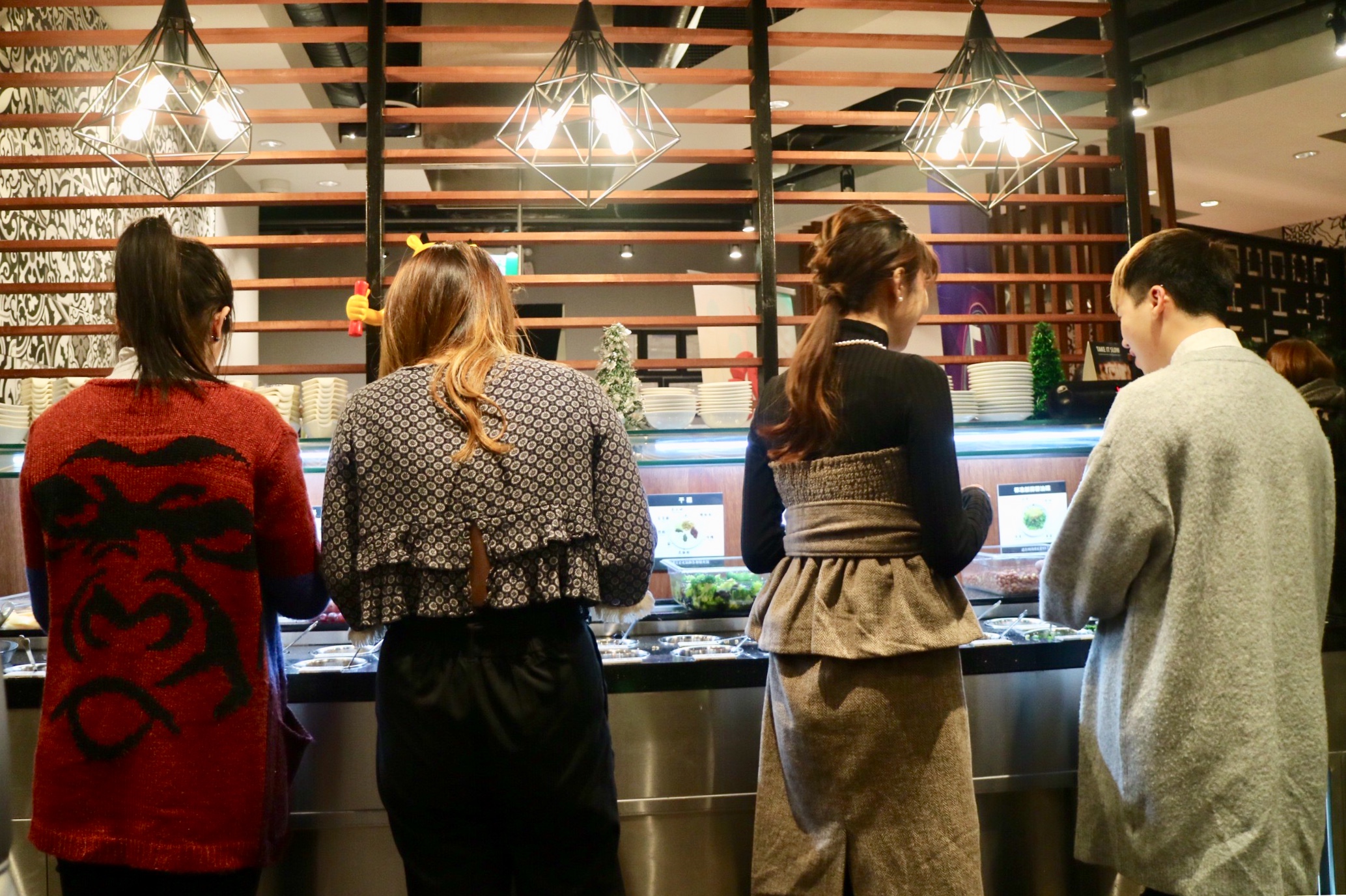
The tasting experience
Dipping sauce
Here at Liuyishou, they have the sauce bar that has the most choices. Although their main specialty is Chongqing style hotpot, they have soup bases
For food cooked in hot & spicy soup, you don’t need a dipping sauce that’s super spicy or salty. Just simply an Oil Plate (??) which consists of just sesame oil, minced garlic, cilantro, green onion, and a dash of chili paste. This is just adding extra aroma to the spicy food, and sesame oil will also protect your stomach from hot spices. And for the non-spicy soup, you can just do whatever you prefer for the extra flavor. You can make dipping sauces based on Shacha or sesame paste. But for Chongqing folks, they like to make a Dry Plate (??) which is completely dry and consists of chili powder, chili flakes, cumin powder, salt & pepper, sesame seeds, and crushed peanuts. You can ask the server to help you make the Oil Plate or the Dry Plate.
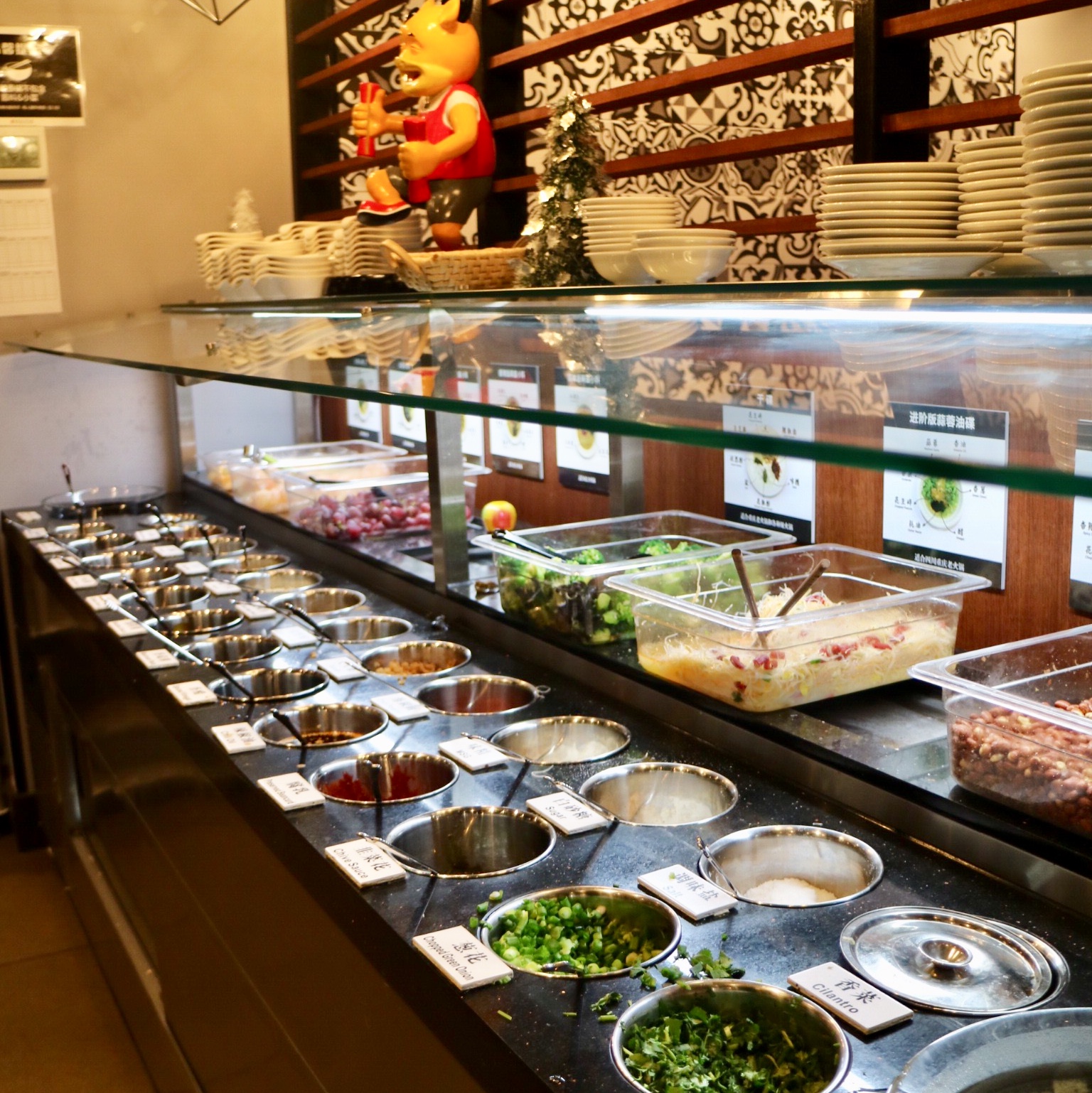
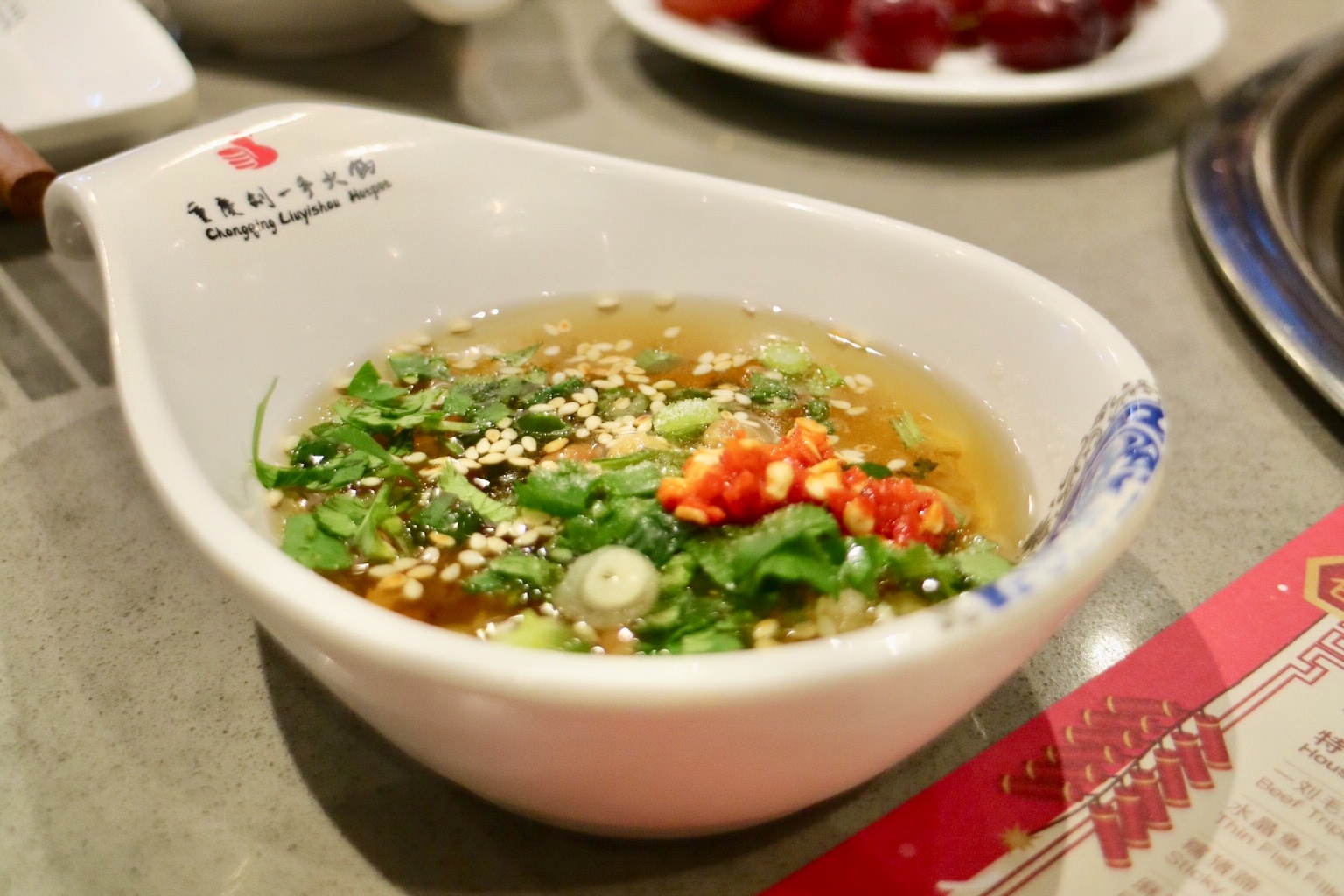
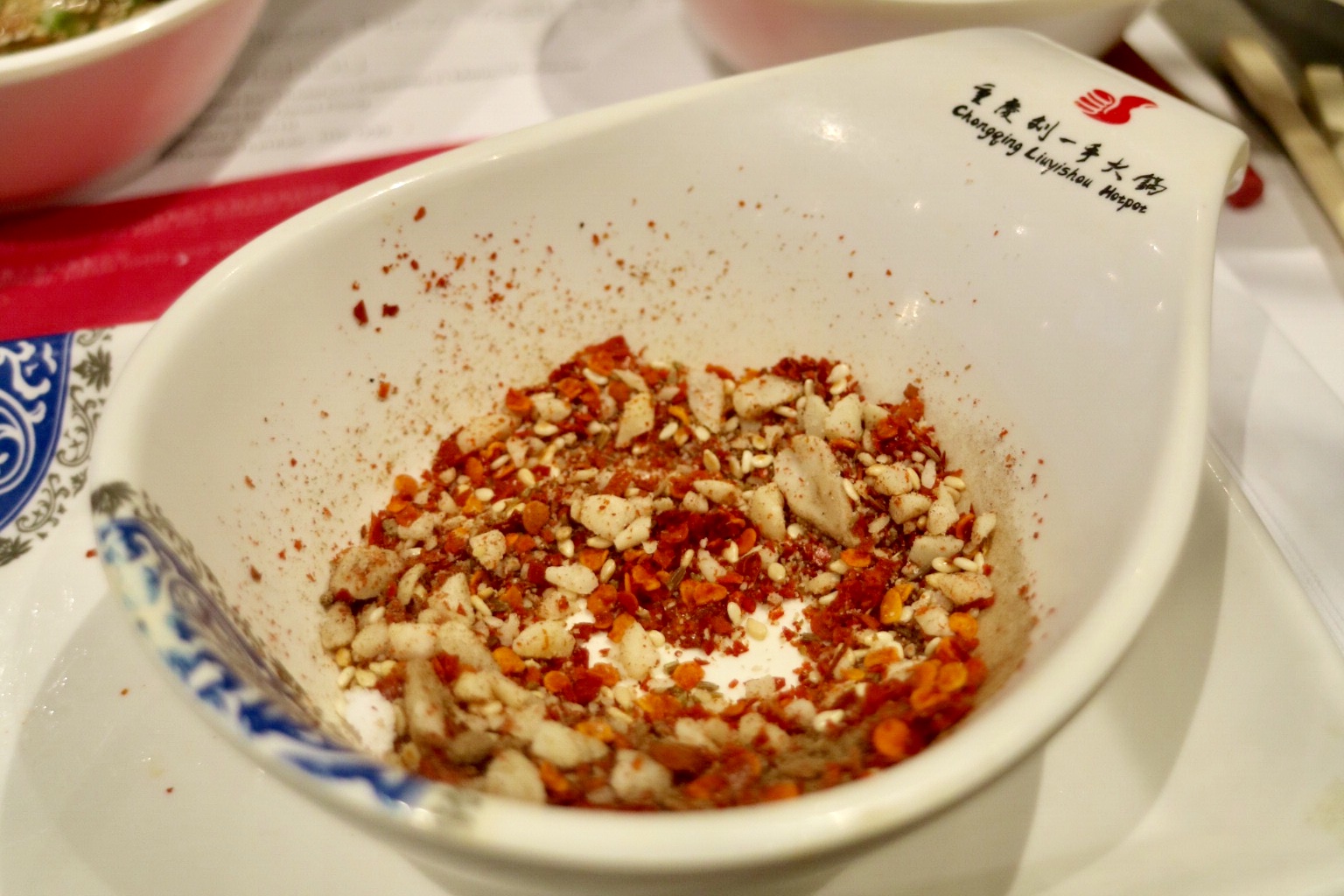
Hotpot Soup Base
The original Chongqing hot pot soup is what they are known for. This soup comes with come with spiced tallow, red hot chili, Sichuan peppercorn, and other exotic herbs and spices. Sometimes you will receive the tallow shaped as their cattle mascot, but the availability is limited. It’s meant to astonish all your senses with the spiciness, umami flavours and aromas. If spicy is not for you, Liuyishou also has other bases like Wild Mushroom, Special Pork Rib or Tomato Soup.
The Food
I have become a fan of the “Ox Throat”. This is how they call it here but it’s actually the aorta or the main artery of a cattle heart. This dish is all about texture. After it’s cooked, it tasted like freshly grilled squid that you get at Japanese izakaya.

The Special Beef Tripe is also my favorite, as it’s less processed than omasum, and it doesn’t need much time to cook. They call the cooking method “7 ups and 8 downs”, meaning you dip the tripe in the boiling hot broth up and down for about 15 seconds.

They have an extensive list of meat and seafood selections here. Their beef and lamb slices are of great quality. There were lots of tofu variations (puffs, fried, fish, etc.), handmade meatballs, and a lot of specialty dishes such as spicy frog legs, duck blood, tenderized beef. One of my favourites has to be the House Special Shrimp Paste, which the server would help you prepare at your table if you’re not sure how to cook it. When it’s cooked, it tastes like a crunch shrimp ball with sweet fresh shrimp flavour.

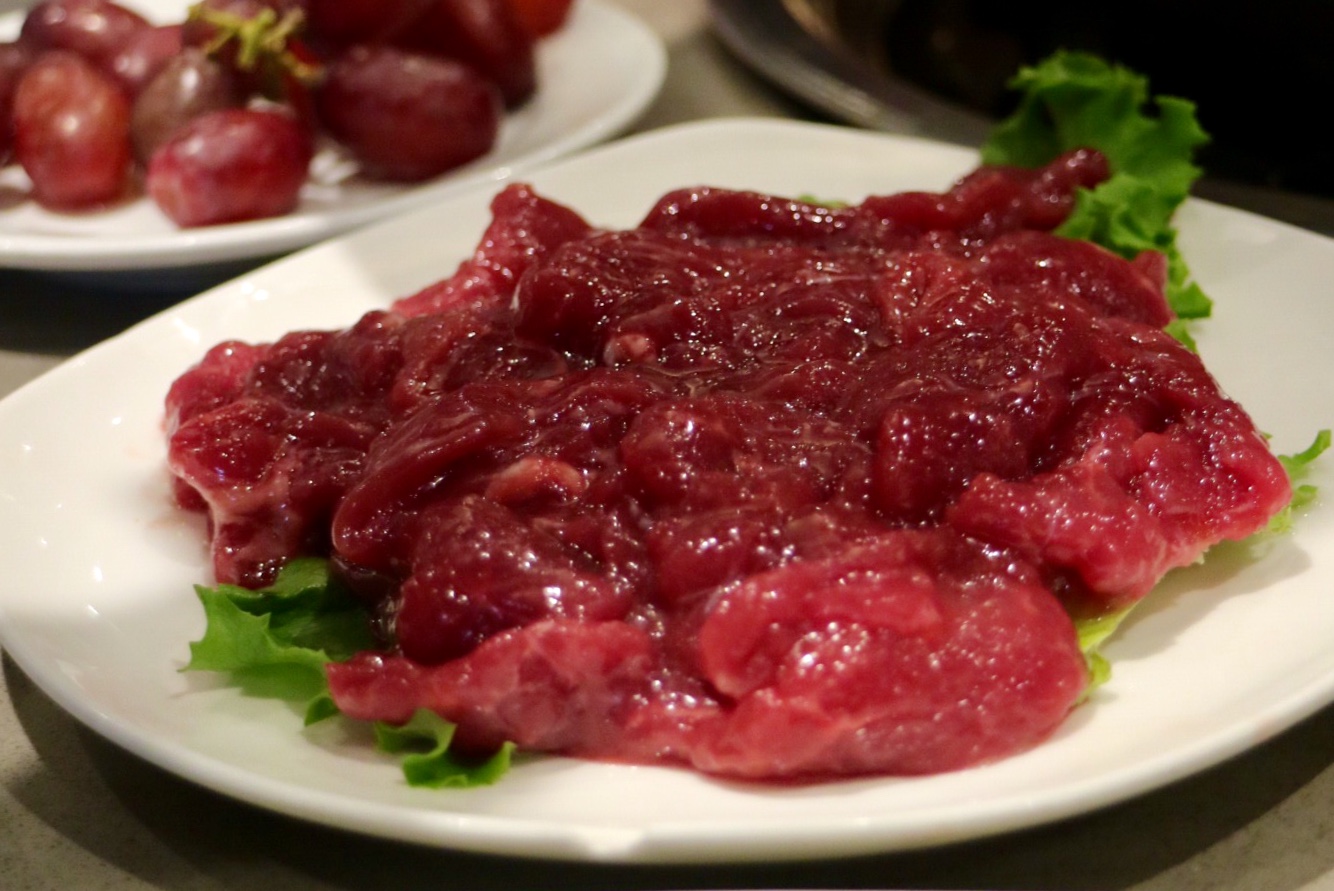
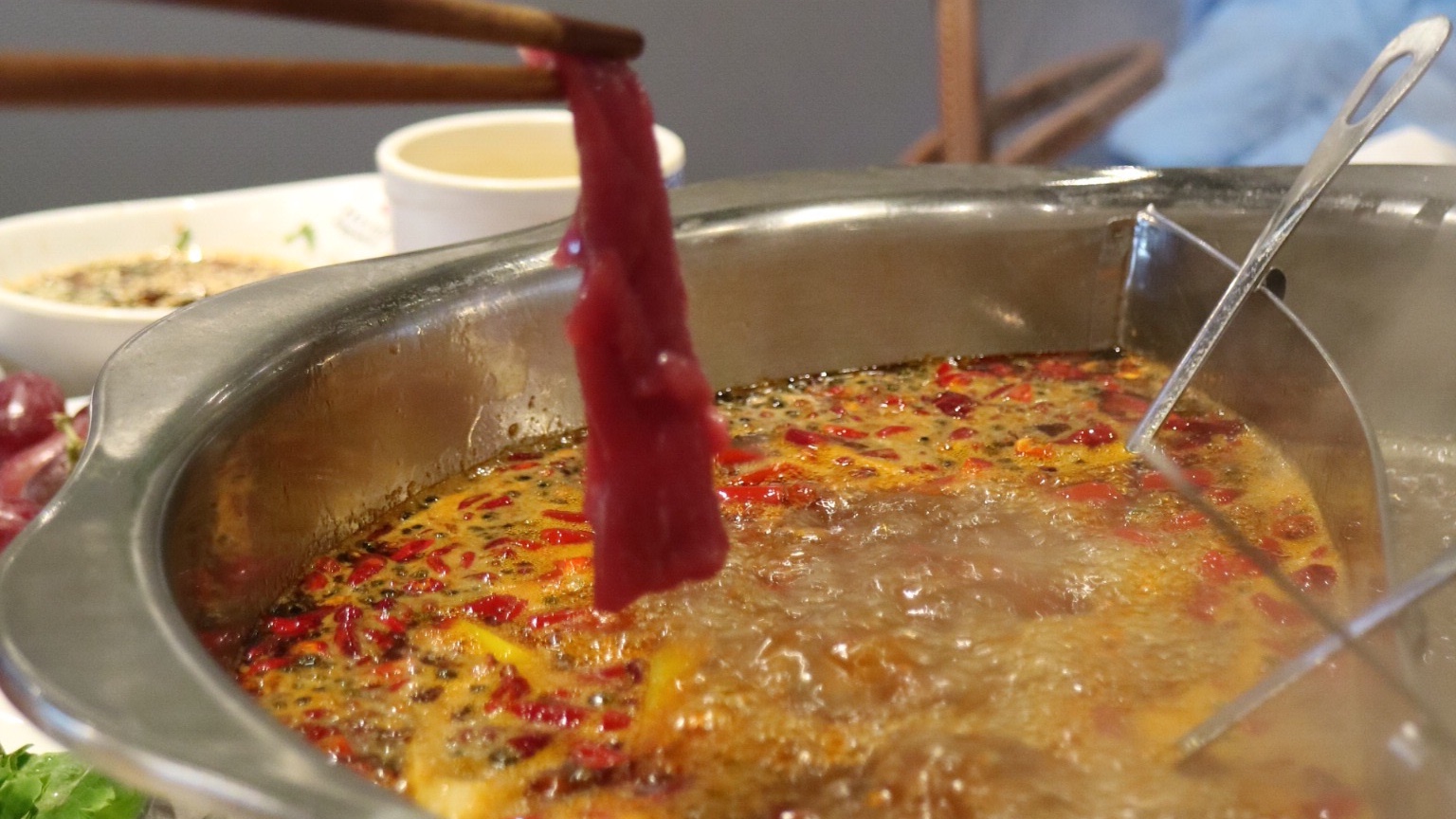

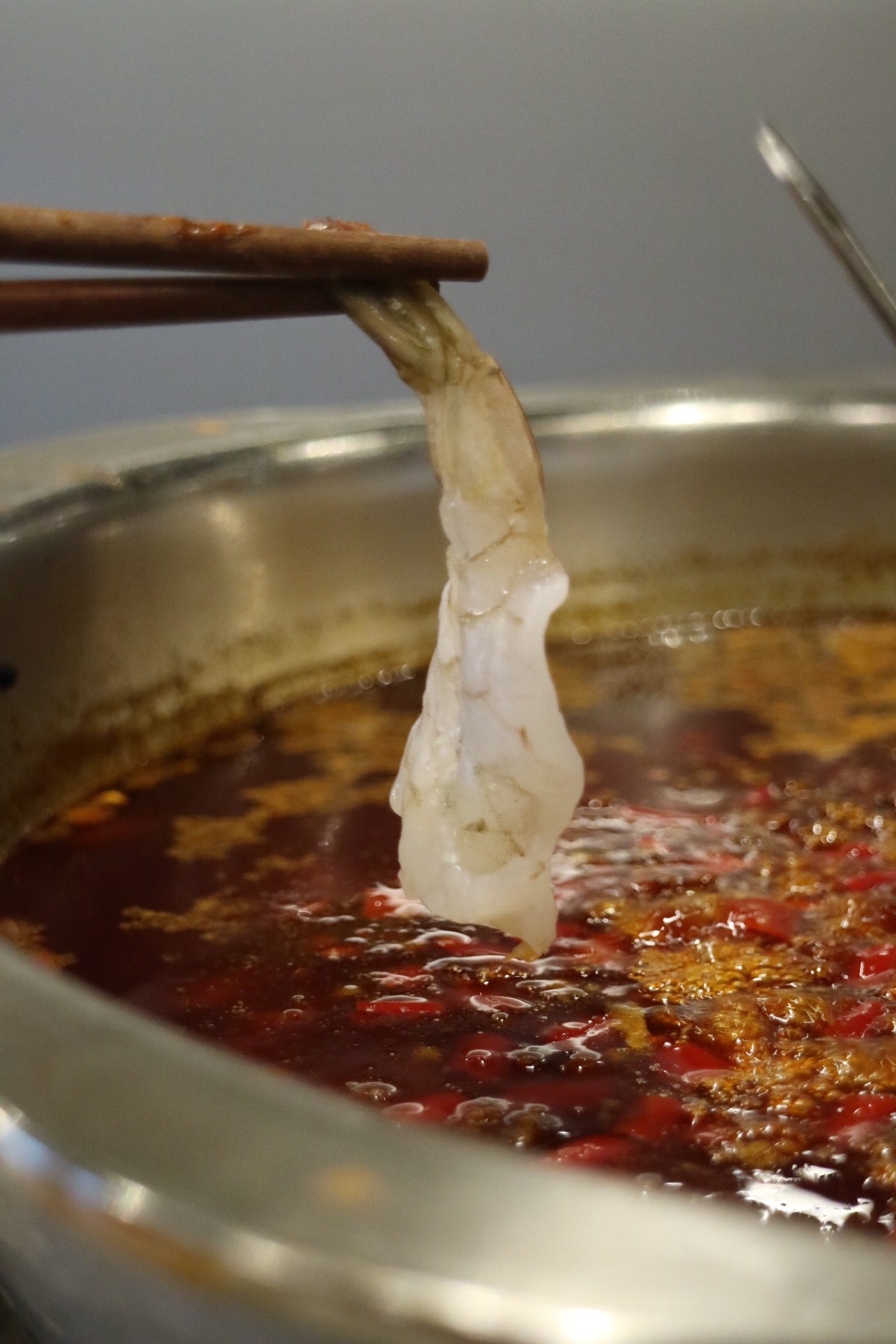
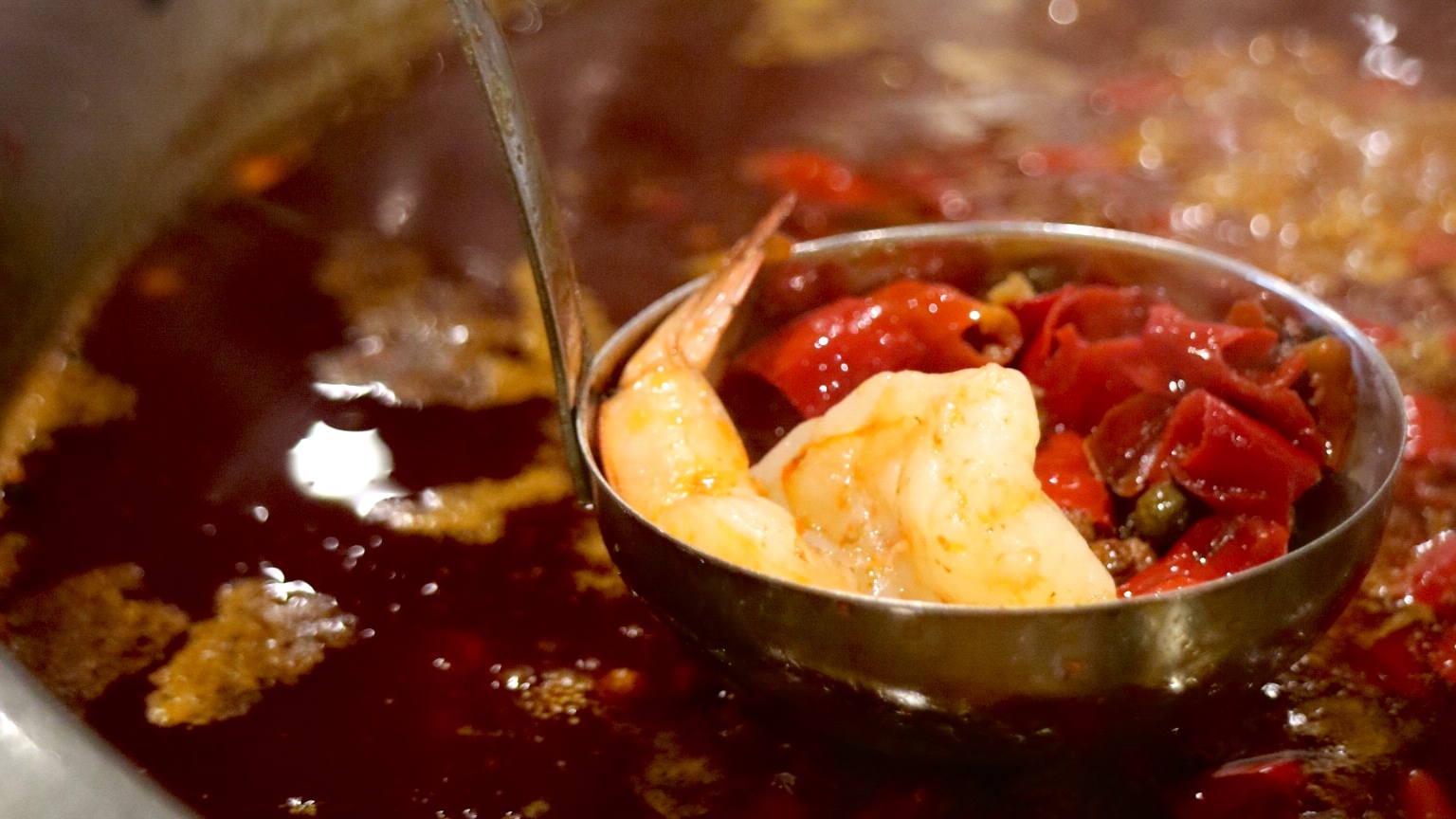

Vegetables and Mushrooms


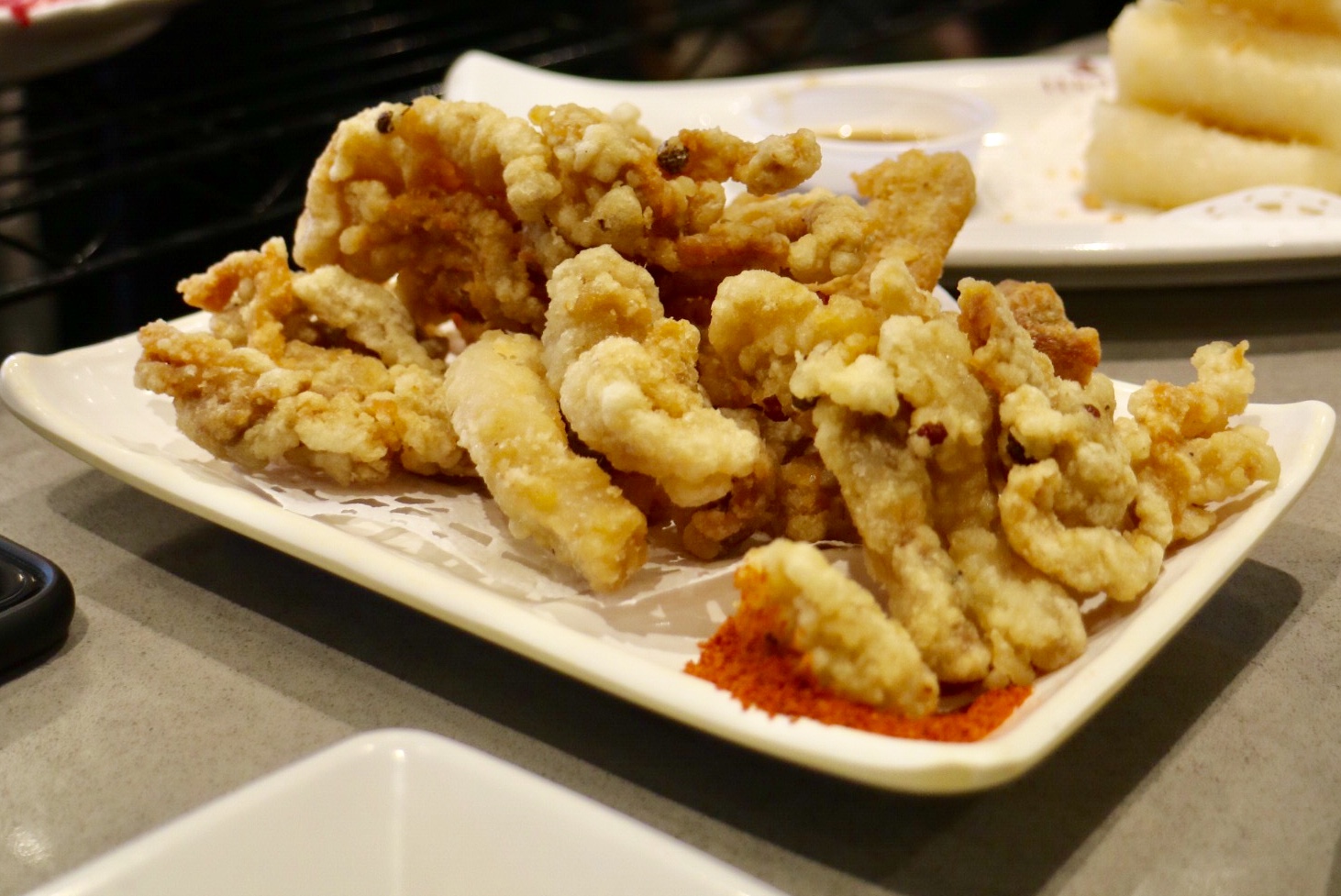
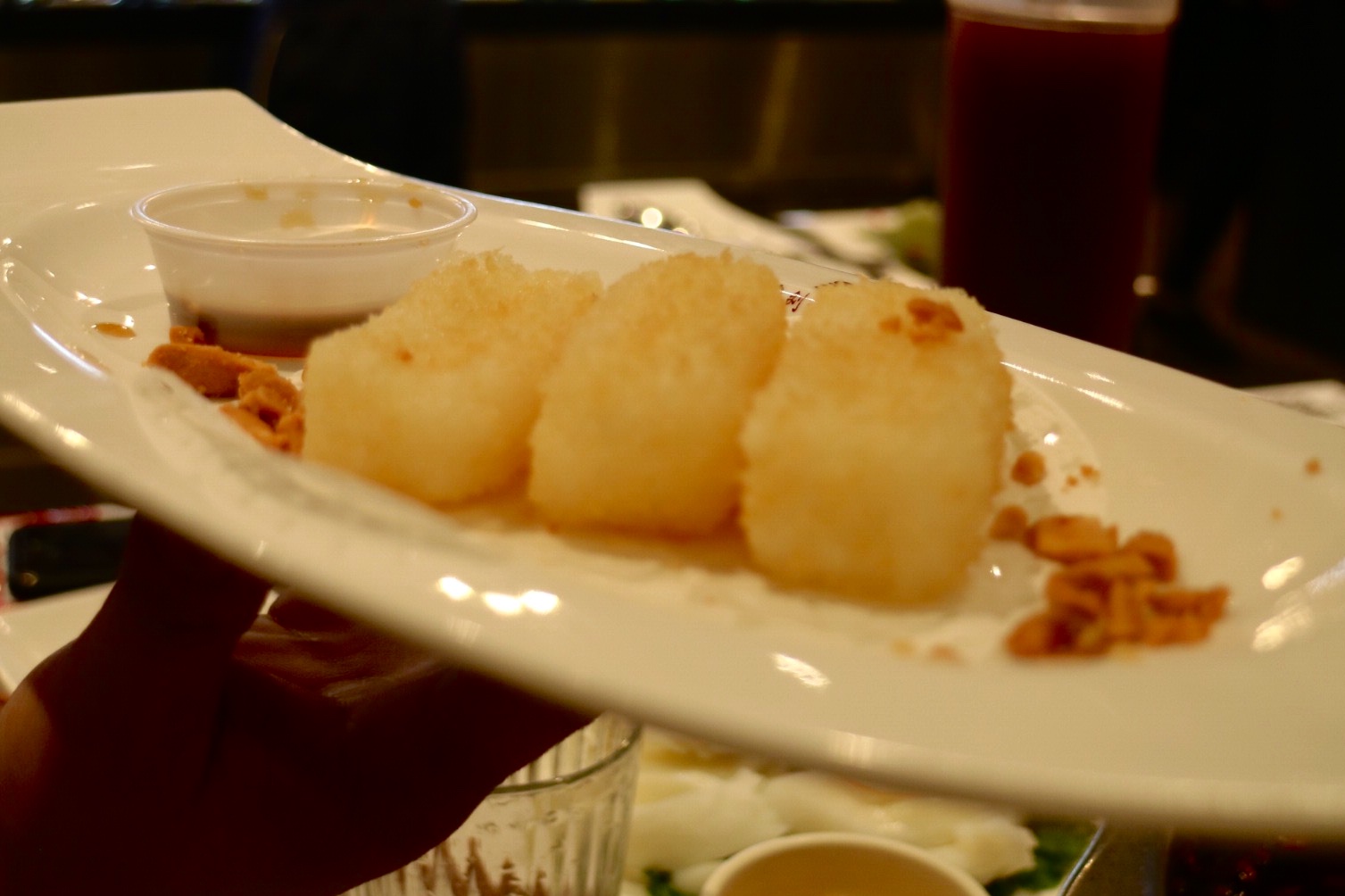
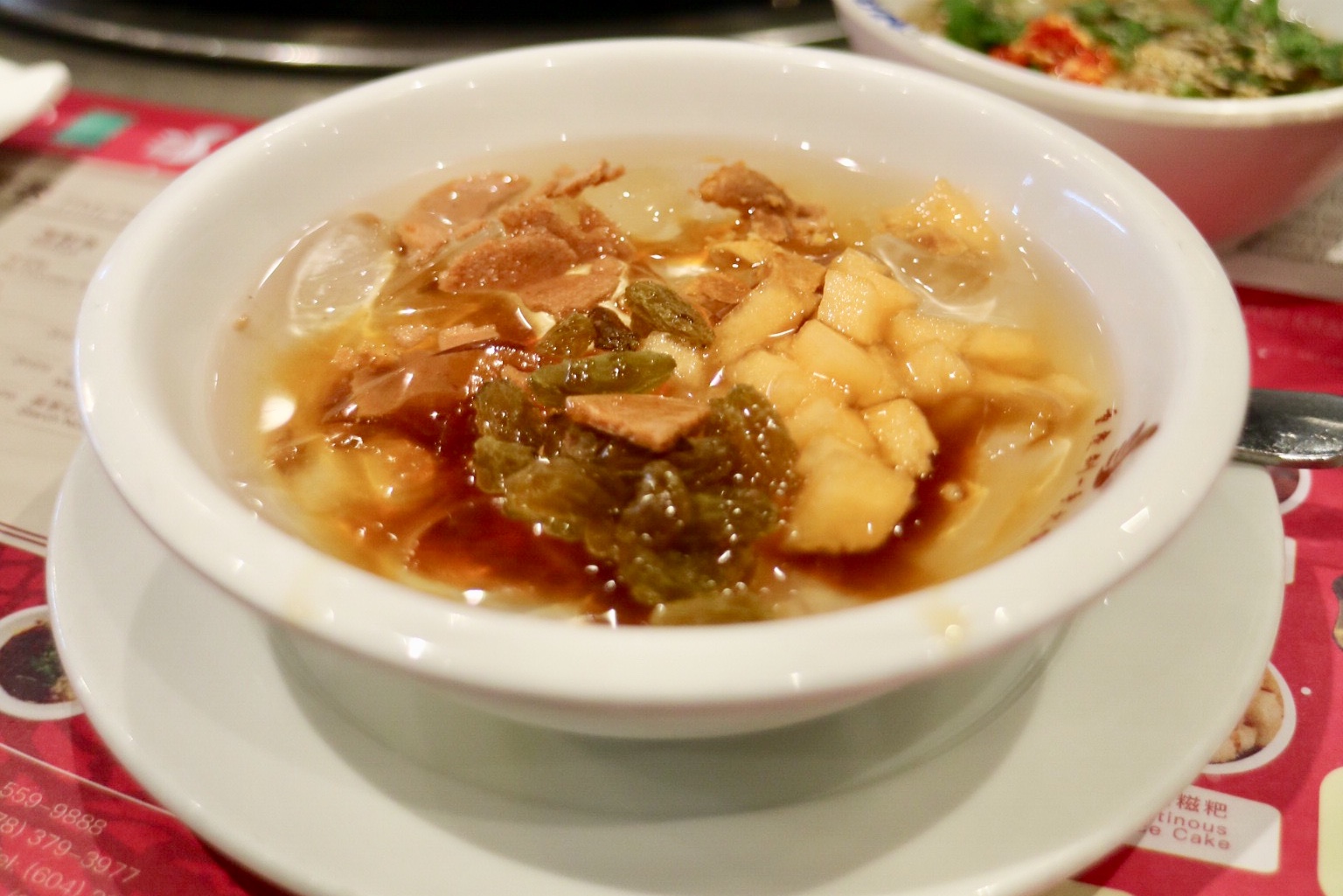
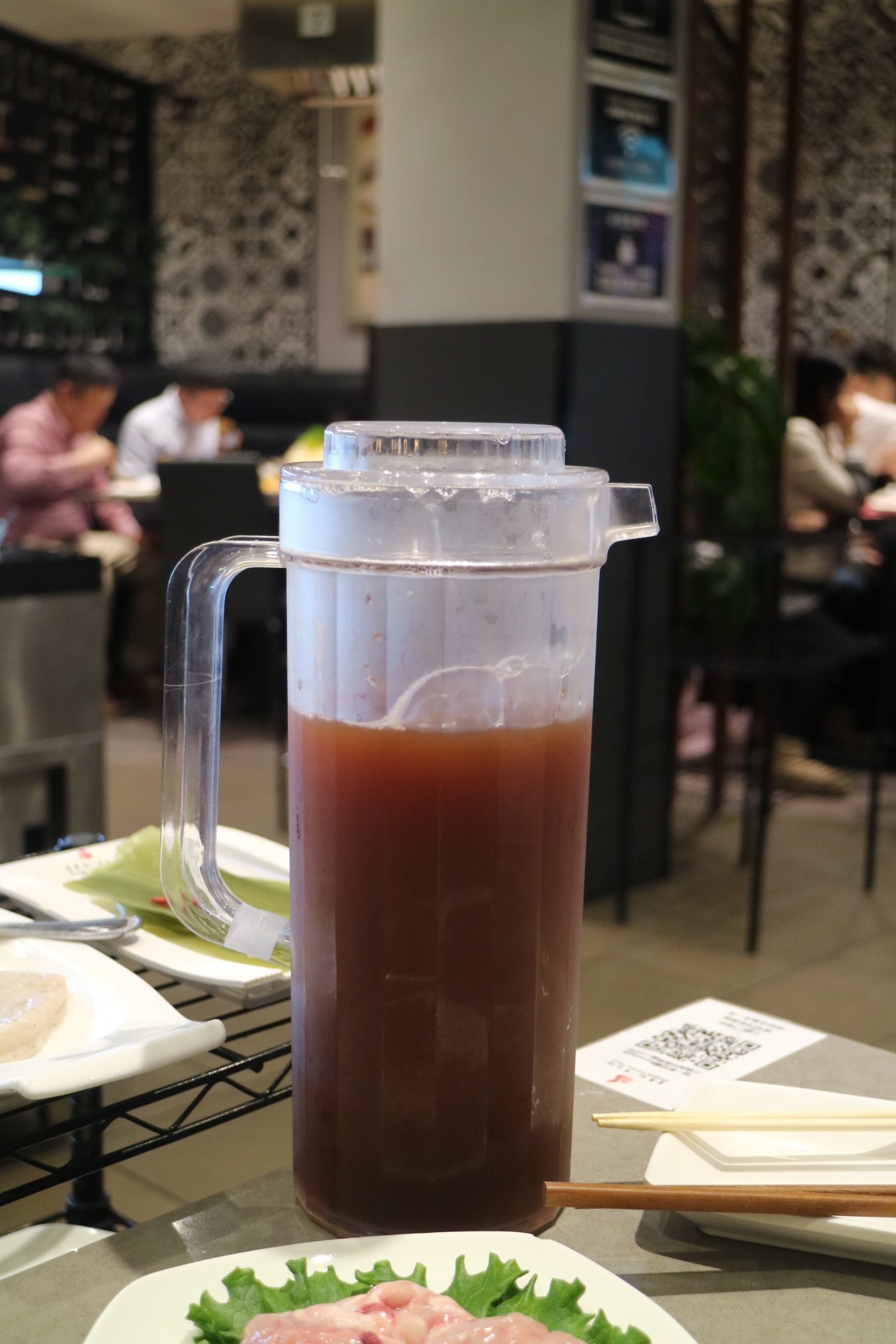
Liuyishou Hotpot Week 2018
Presented by Vancouver Gourmet Tours, Liuyishou is celebrating Chinese New Year with Liuyishou Hotpot Week 2018 (February 26 – March 2), and tickets are available on Eventbrite. It’s a great opportunity to have an authentic Chongqing style hotpot experience!
Beer Pairing is included in the holiday hotpot dinner set menus at Vancouver, Richmond and Burnaby location. Liuyishou has found the perfect local craft beers to complement the special hotpot broth at Red Truck Brewery. Enjoy a Red Truck Lager, Dark Lager or IPA along with the Chongqing hotpot experience.
Price: $$
Rating: [wp-review id=”13107″]
Richmond, BC
150-4731 Garden City Road,
Richmond, BC V6X 3M7 Canada
(604) 285-6122
Burnaby, BC
5507 Kingsway, Burnaby,
BC V5H 2G3 Canada
(604) 559-9888
Vancouver, BC
1542 Robson St, Vancouver,
BC V6G 1C2 Canada
(778) 379-3977
or http://www.liuyishouna.com/
* All dishes and beverages tasted in this post were complimentary. Opinions are on the reviewer’s own.
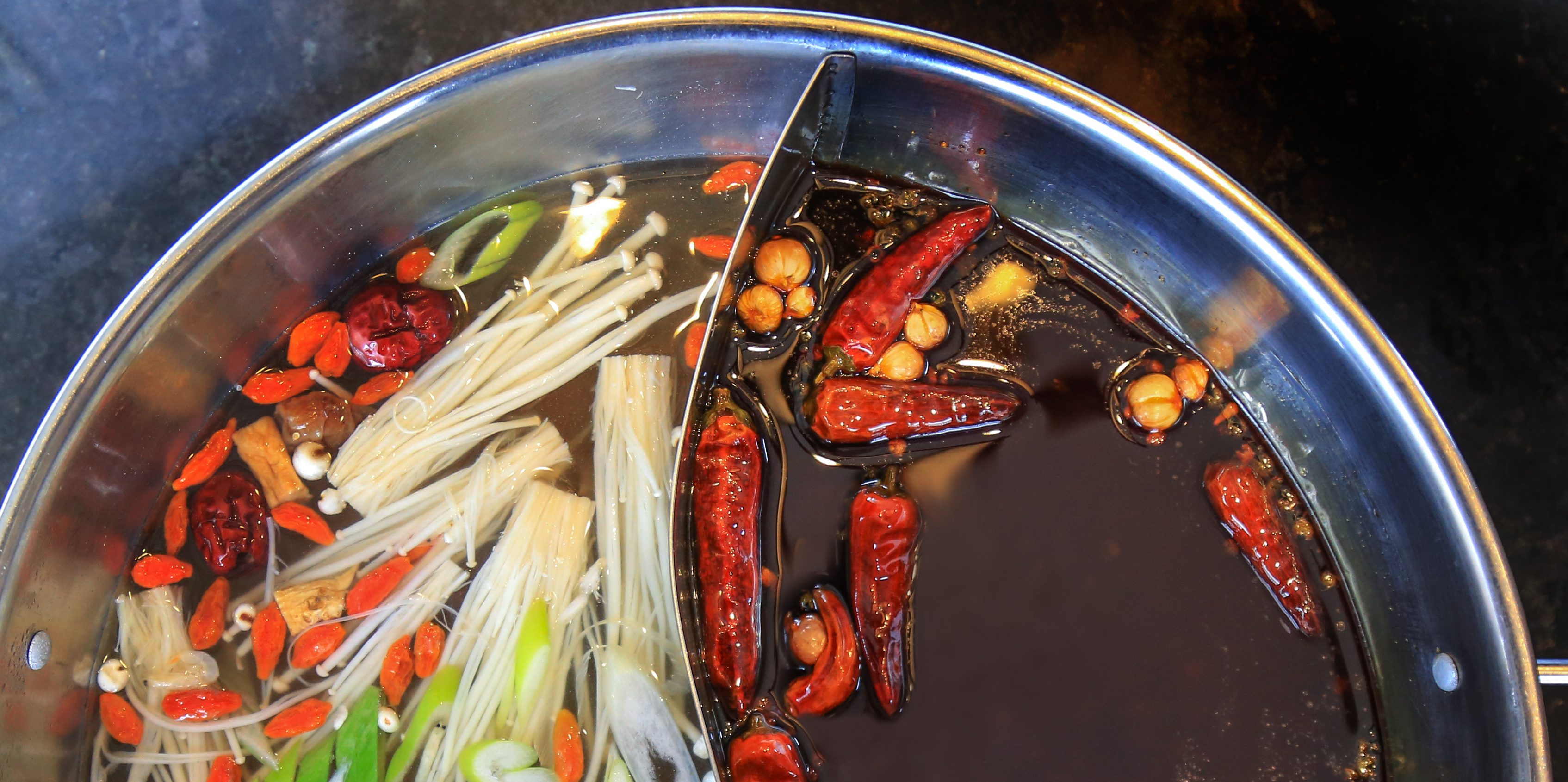
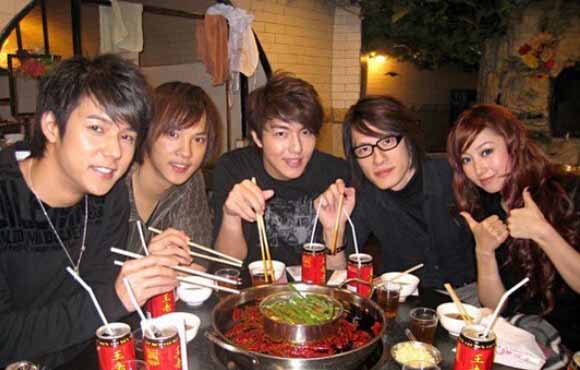
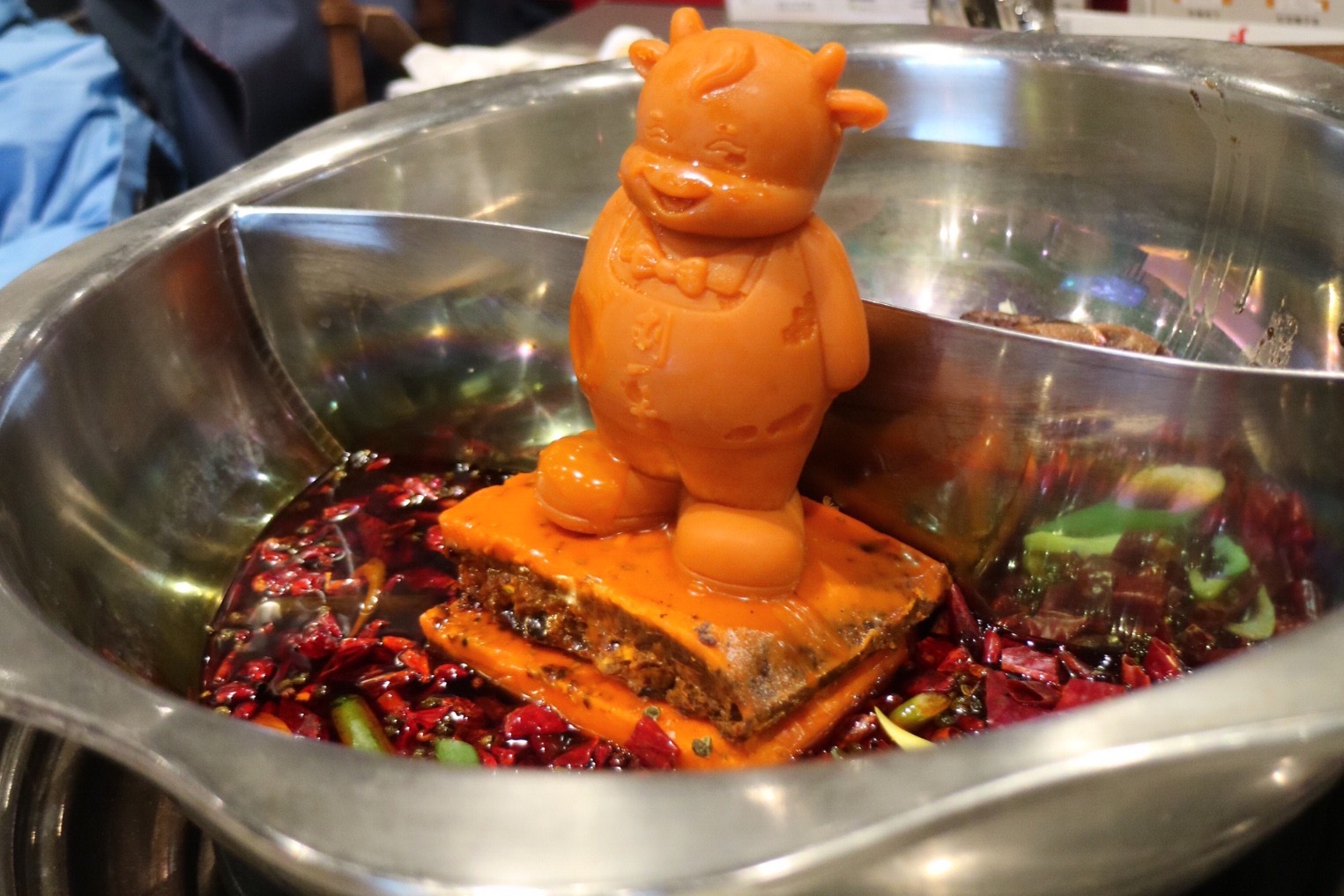
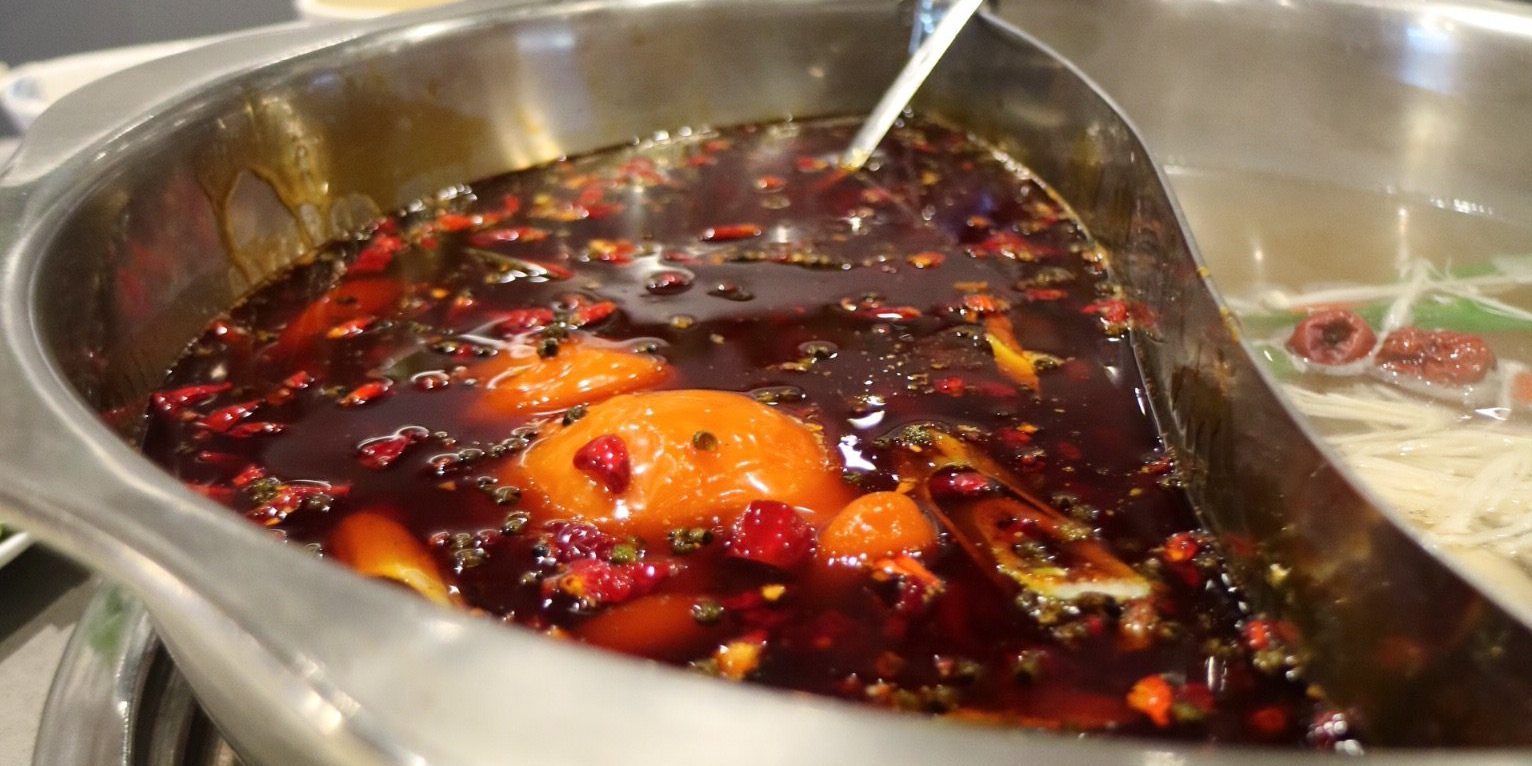
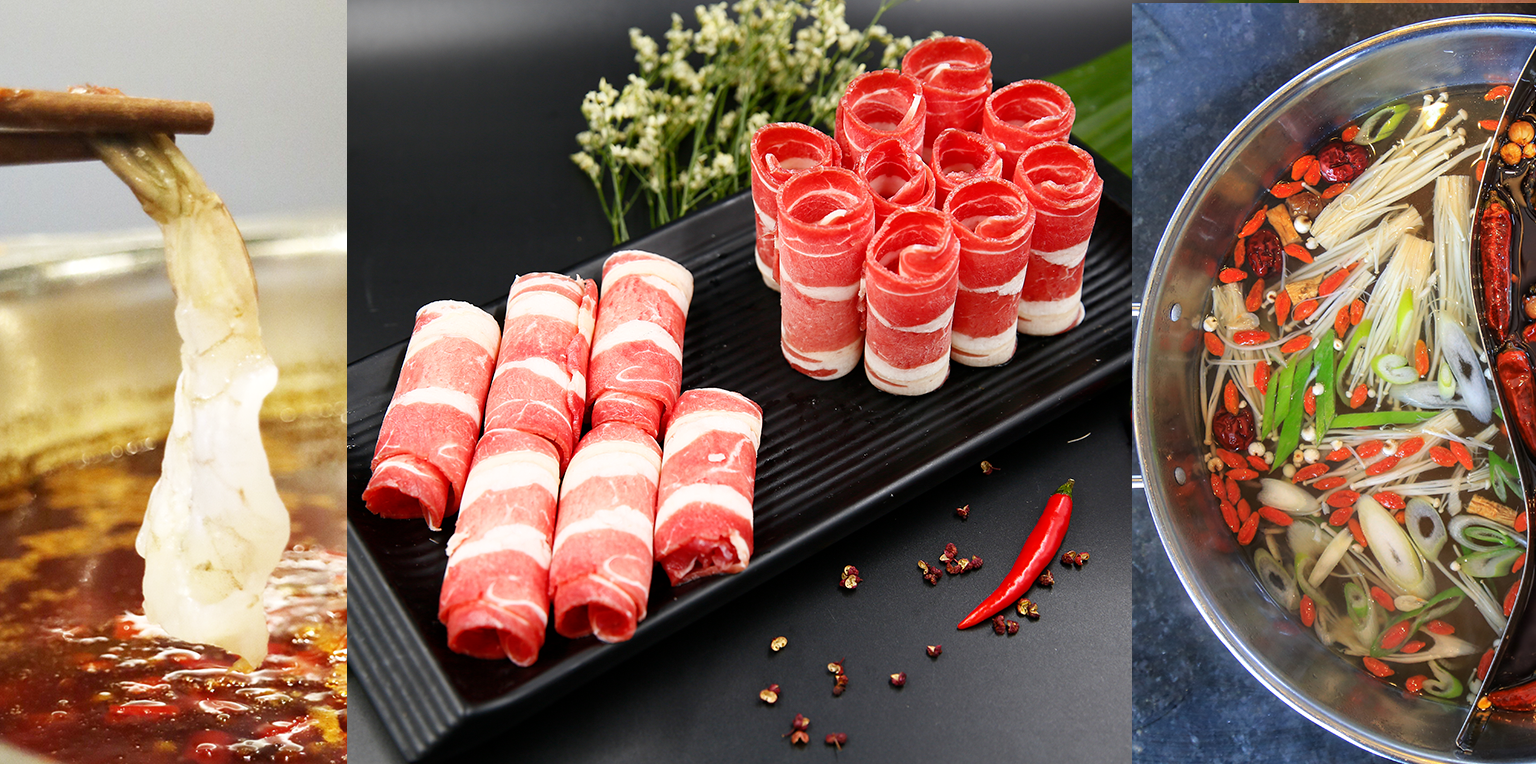
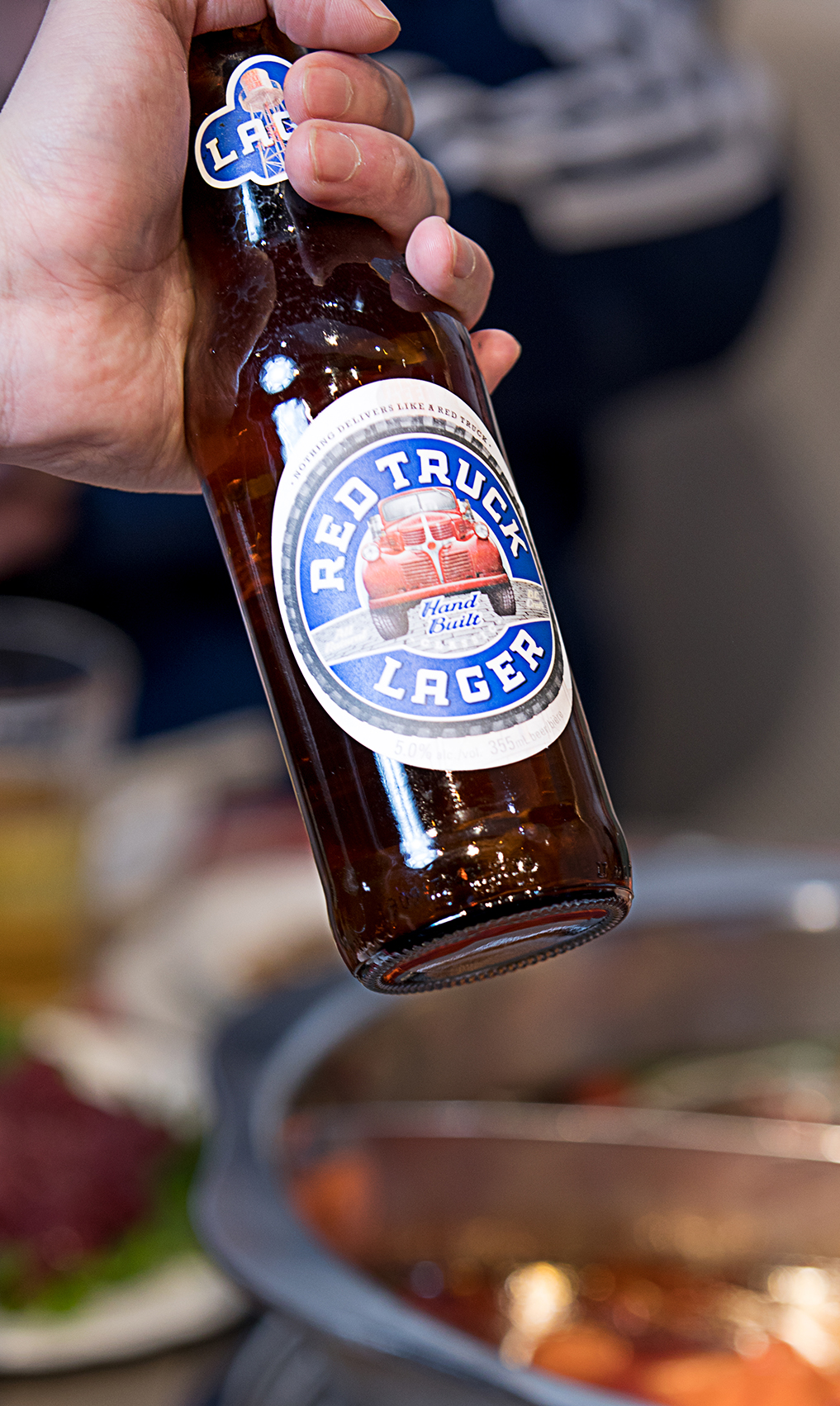




Pingback: Authentic Teochew beef hotpot makes Teo Restaurant & Bar special in North America - PickyDiners.com
Pingback: Newly opened: spiced up dry hot pot dinner at Chef Pin in Richmond 品一品 - PickyDiners.com
Awesome and mouth watering dishes pics.